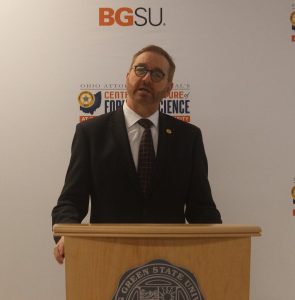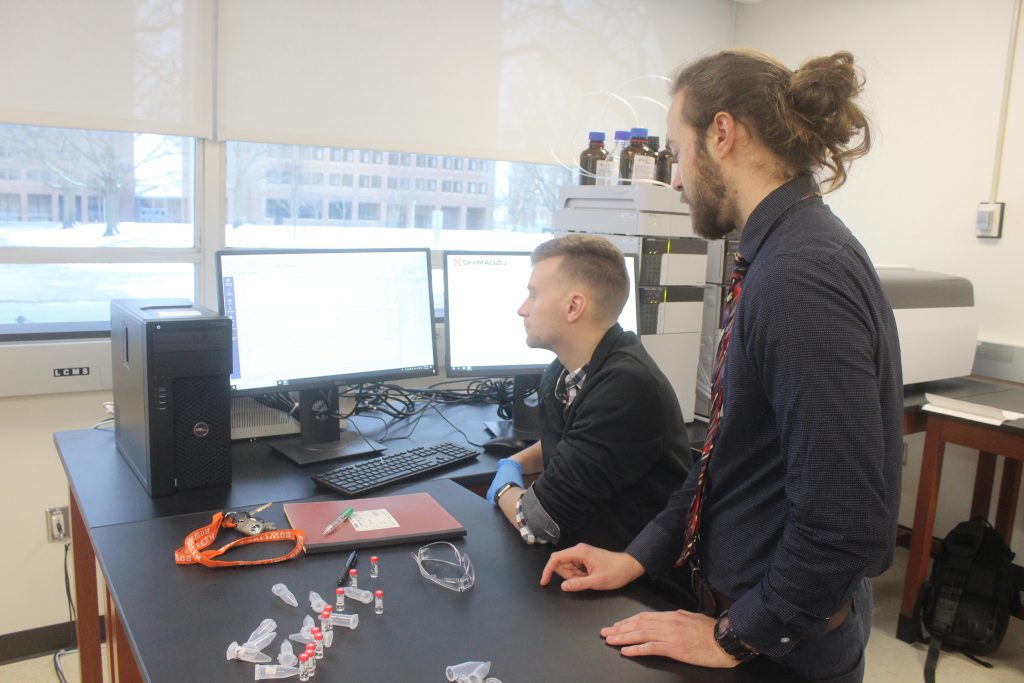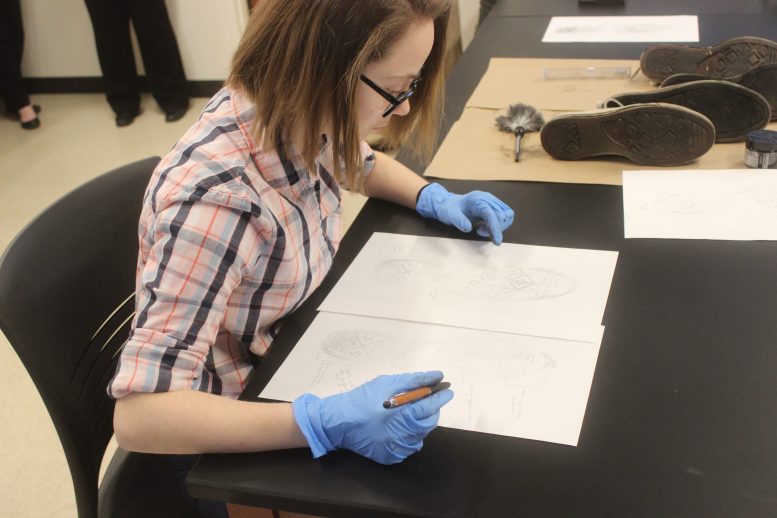By DAVID DUPONT
BG Independent News
Melissa Jollie, who grew up in a “science dominated” family, was inspired to go into forensic science in part by her love of crime shows.

A junior in forensics science with a specialty in biology, Jollie said that closeness to the BCI lab has paid off. “A lot of people who work at BCI will come to our forensic classes and talk about what they do. It’s been a good students to see what our careers could be.”
She wanted to come to Bowling Green State University because of its close ties with the real life work of forensic sciences. Having the Bureau of Criminal Investigation lab which opened on campus in 2014 “was a big component in my being here,” the student from Maryland said.
Now students get even more insight into their careers with the new Center for the Future of Forensic Science. State and university officials celebrated the opening of the lab in the Life Science Building on Tuesday.
The lab uses the same equipment and procedures as the nearby state BCI lab.

Dave Yost, on his first working day as state attorney general, said the center will “advance the frontiers of forensic science.”
Also, it will provide “a good pipe line of qualified young people who understand the science and are ready to go to work from day one. The demand for this kind of evidence, this kind of analysis, is just expanding,” he said.
When students graduate and take jobs in BCI labs, they will not have as steep a learning curve because they will be working on familiar equipment and in a familiar environment, he said. “This is going to help Ohio become a leader in forensic science.”
Jon Sprague, who directs the center, said it cost $1.2 million to build the center with another $800,000 to equip it. The BCI donated some of the equipment and provided grants to purchase more.
Sprague thanked former State Senator Randy Gardner for his help as a legislator to make the center as well as the nearby lab a reality.
Gardner was spending his first full day as Ohio chancellor of higher education on the campus of his alma mater. He said the center would be a model for this kind of partnership.
BGSU President Rodney Rogers said in conversations with Mike DeWine, then attorney general, now governor, “we always talked about the importance of getting right” when it came to evidence in criminal trials. “If we can improve the quality of science, we can make sure we get it right.”
And this is a core mission of public universities to conduct “relevant and meaningful research driving public good,” Rogers said.

The BCI lab and the center is a partnership between BGSU and the state “to meet workforce needs and give our student opportunities to lead very meaningful and productive lives, he said.”
That’s why Latisha Pipes came to BGSU for graduate work after studying forensic science at the University of Findlay. She found she needed more education to land the kind of crime lab job she wanted.
So after talking with Sprague about the research possibilities, she opted attend BGSU.
It was the chance to do research that attracted her as well as the proximity to the BCI lab. She’s already consulted with a ballistics expert from the state.
Rob Goldsmith, the lab technician, said the hands-on experiences provided by the new lab are “vastly superior” what could be offered before. In the lab students will get “to replicate real world experiences” by working on cases.
Students were at work around the room on projects — peering into microscopes, studying computer screens, and analyzing old sneakers.
The work with its focus on detail can be tedious, said Nevada Smith, who was studying the fibers of a t-shirt.
These students were on campus for internships during the university’s new January term.
This was an example of what the new winter session is meant to provide,“high impact experiential” learning that will help prepare students for lives after they graduate, Rogers said.
Natalie Wise, a junior in forensic sciences with a concentration in biology, said she came to BGSU because she could major in forensic science.
She was attracted to the field because she liked science and it offered a career in which she could “help people and help solve crimes.”
Sprague speculated that this desire to serve is one of the reasons that forensic science draws more women to its ranks than usual for STEM fields.
He said of the 90 undergraduates and graduate students in forensic science at BGSU, 80 percent are women.
Sprague said a grant from the Choose Ohio First program provides help for women studying science including scholarships.
Sprague, who arrived on campus in 2014, sees this as a fulfillment of the promise evident when the BCI lab opened.
The work continues. “Forensic science is always changing,” he said. “Because it changes so quickly we have to make sure everyone stays up to date.”
That includes not just students preparing for careers, but those already involved in criminal justice. The center hosted five professional training seminars in past year. Those included one on investigating officer-involved shootings. Another trained forensic scientists in how to be expert witnesses. And judges came to campus to learn about forensic science.
Yost said that while TV shows may paint an unrealistic picture of what law enforcement can do, they do raise jurors’ expectations. “Jurors and the public want to see good forensic science when we take cases to court.”

